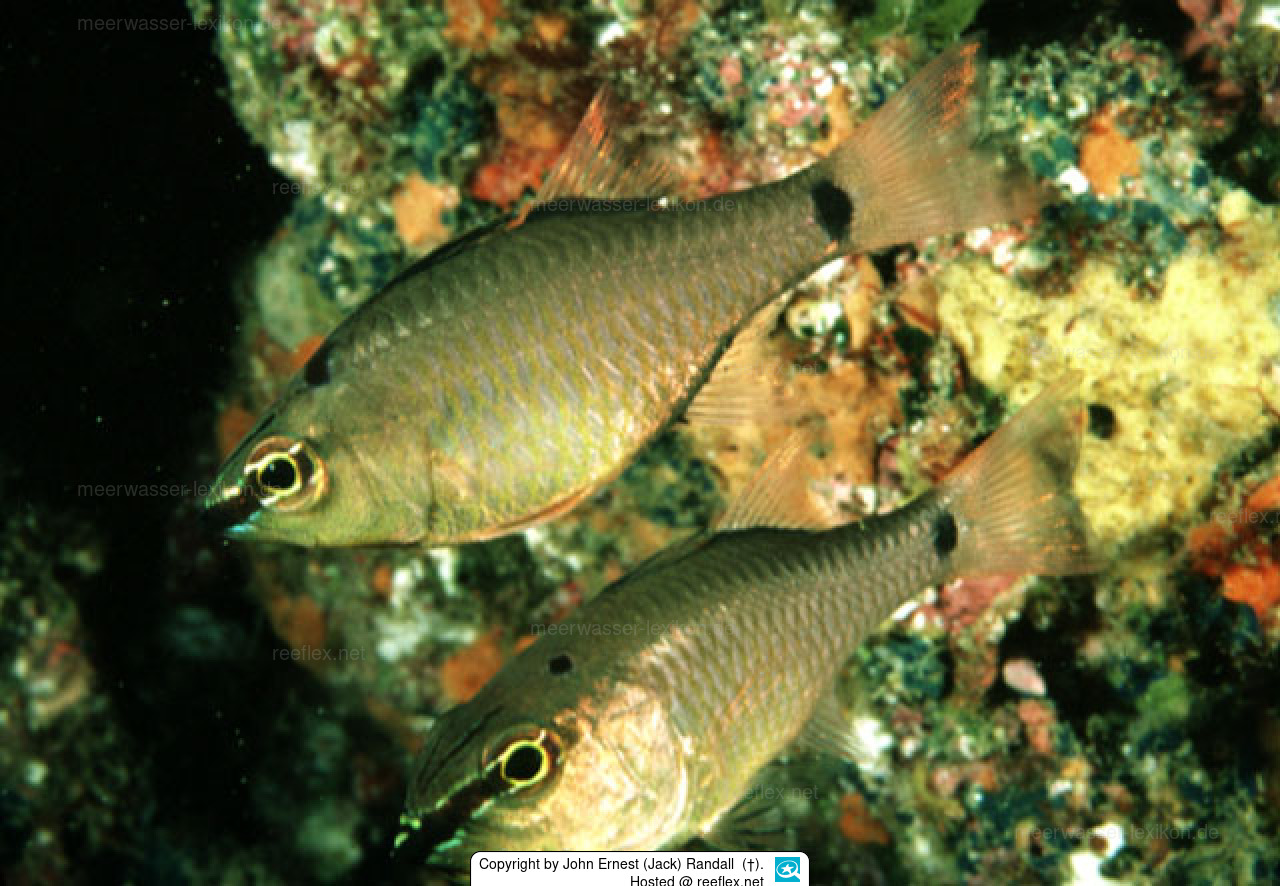Info
Distribution
Western Pacific: southern Japan south to the Coral Sea.
Biology:
Occur in groups around coral bommies.
In Japan, the breeding season is from June to September. Breeding pairs set up territory which is mostly defended by the female.
Mouthbrooding is done by the male parents and some of which resort to partial egg cannibalism probably to adjust the brood size to their buccal capacity.
Nocturnal species.
Synonyms:
Sparus notatus (Houttuyn, 1782)
Apogon notatus (Houttuyn, 1782)
Classification: Biota > Animalia (Kingdom) > Chordata (Phylum) > Vertebrata (Subphylum) > Gnathostomata (Superclass) > Pisces (Superclass) > Actinopteri (Class) > Perciformes (Order) > Percoidei (Suborder) > Apogonidae (Family) > Apogoninae (Subfamily) > Apogon (Genus) > Apogon notatus (Species)







 Dr. John Ernest (Jack) Randall (†), Hawaii
Dr. John Ernest (Jack) Randall (†), Hawaii













































































